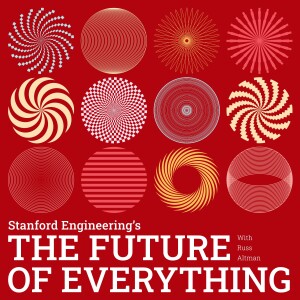
David Miller: How light could transform computing
 2021-02-10
2021-02-10
As the silicon chip embarks upon its second half-century of dominance in computing and communications, the field is confronting fundamental boundaries that threaten to halt that progress in its tracks.
The transistor cannot get much better or smaller and the copper wires that connect them cannot carry much more data than they do now. But, says electrical engineer David Miller, an alternative technology that uses light instead of electricity has the potential to transmit vastly more data than present technologies. It’s known as photonics.
“A silicon chip these days looks like six Manhattan grids stacked atop one another,” Miller says of the challenge facing today’s technology. Photonics holds the promise of more powerful computing by beaming tiny packets of photons through light-bearing conduits that carry 100,000 times more data than today’s comparable wires, and it can do it using far less energy, too.
Before that day can arrive, however, Miller says photonic components need to become much smaller and less expensive to compete with the sheer scale advantages silicon enjoys, and that will require investment. But, for once, a way forward is there for the asking, as Miller tells bioengineer Russ Altman, host of Stanford Engineering’s The Future of Everything podcast. Listen and subscribe here.
Connect With Us:
Episode Transcripts >>> The Future of Everything Website
Connect with Russ >>> Threads or Twitter/X
Connect with School of Engineering >>> Twitter/X
More Episodes
 2023-04-07
2023-04-07
 2023-03-17
2023-03-17
 2023-03-10
2023-03-10
 2023-02-10
2023-02-10
 2023-01-20
2023-01-20
 2022-12-16
2022-12-16
 2022-12-02
2022-12-02
Create your
podcast in
minutes
- Full-featured podcast site
- Unlimited storage and bandwidth
- Comprehensive podcast stats
- Distribute to Apple Podcasts, Spotify, and more
- Make money with your podcast
It is Free
- Privacy Policy
- Cookie Policy
- Terms of Use
- Consent Preferences
- Copyright © 2015-2024 Podbean.com




